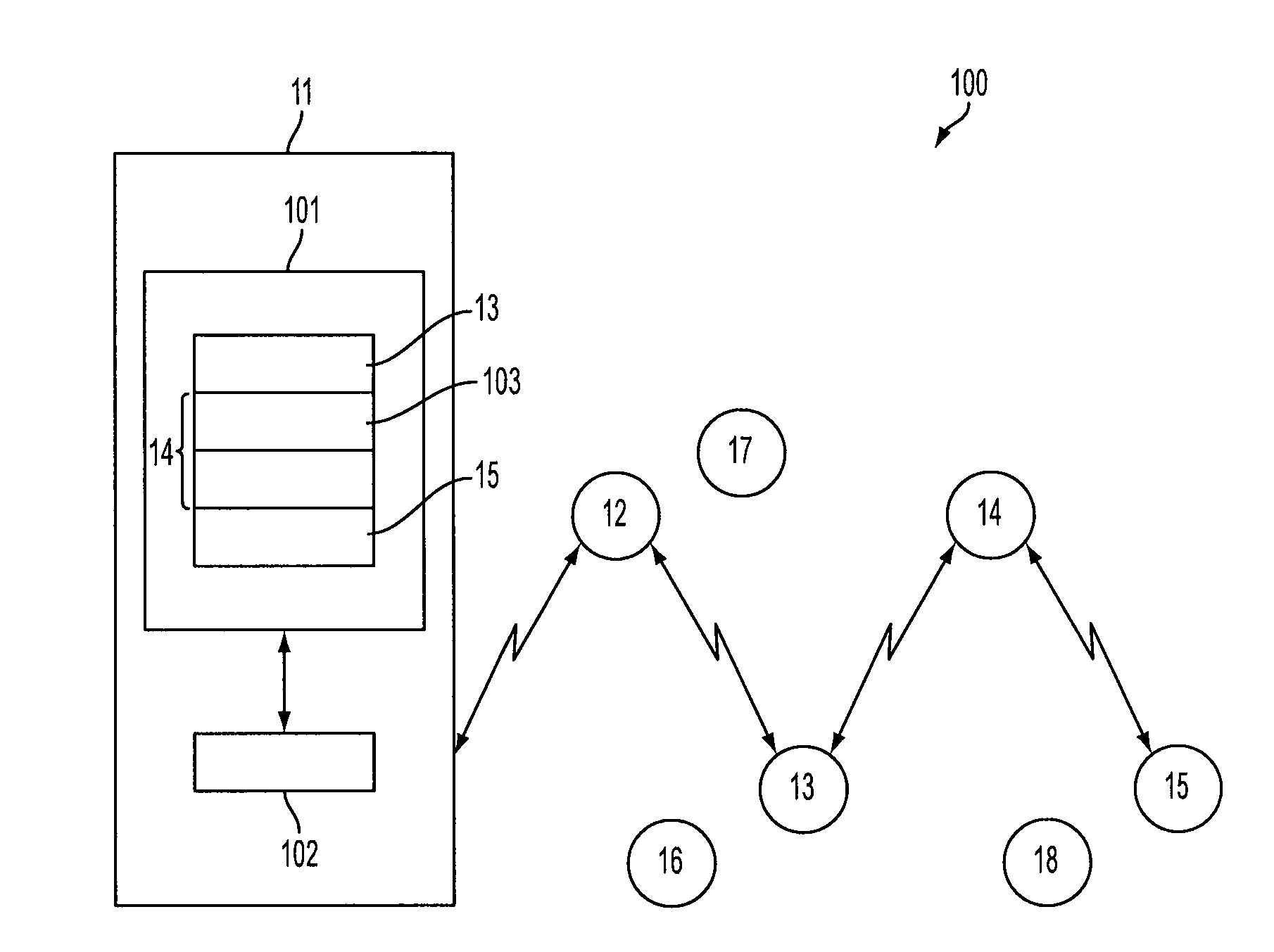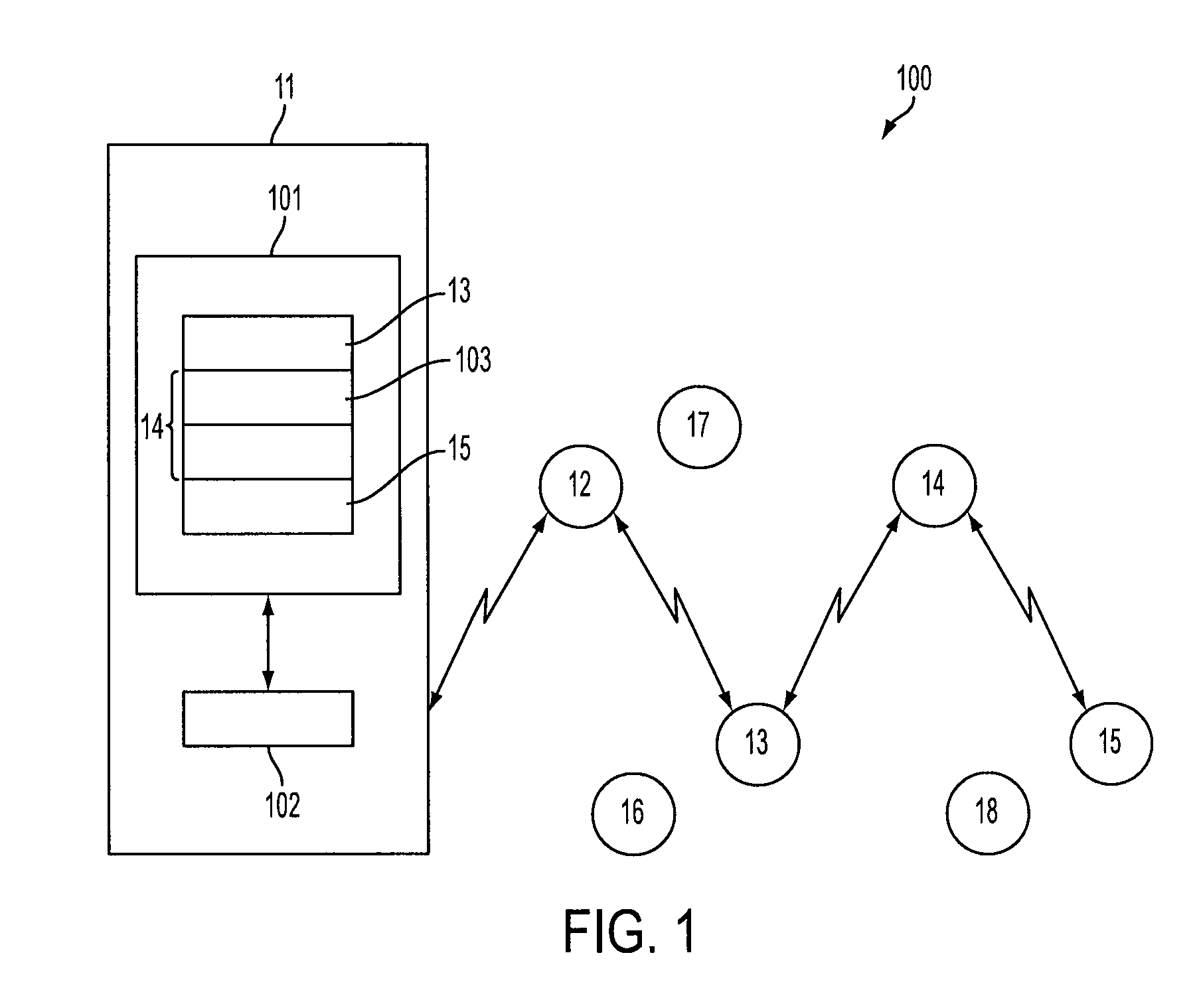Adaptive network system with online learning and autonomous cross-layer optimization for delay-sensitive applications
a network system and adaptive technology, applied in the direction of network traffic/resource management, electrical equipment, wireless commuication services, etc., can solve the problems of high implementation cost, network architecture creates dependencies among layers, and ignores the adaptability of lower layers
- Summary
- Abstract
- Description
- Claims
- Application Information
AI Technical Summary
Benefits of technology
Problems solved by technology
Method used
Image
Examples
Embodiment Construction
[0038]In the following description, for the purposes of explanation, numerous embodiments and specific details are set forth in order to provide a thorough understanding of the present disclosure. This invention may, however, be embodied in many different forms and should not be construed as limited to the embodiments set forth herein. Rather, these embodiments are provided so that this disclosure will be thorough and complete, and will fully convey the scope of the invention to those skilled in the art. Like numbers refer to like elements throughout, and prime and multiple prime notations are used to indicate similar elements in alternate embodiments. In other instances, well-known structures and devices are shown in block diagram form in order to avoid unnecessarily obscuring the present disclosure. It will be apparent, however, to one skilled in the art that concepts of the disclosure may be practiced or implemented without these specific details.
[0039]FIG. 1 illustrates an exemp...
PUM
 Login to View More
Login to View More Abstract
Description
Claims
Application Information
 Login to View More
Login to View More - R&D
- Intellectual Property
- Life Sciences
- Materials
- Tech Scout
- Unparalleled Data Quality
- Higher Quality Content
- 60% Fewer Hallucinations
Browse by: Latest US Patents, China's latest patents, Technical Efficacy Thesaurus, Application Domain, Technology Topic, Popular Technical Reports.
© 2025 PatSnap. All rights reserved.Legal|Privacy policy|Modern Slavery Act Transparency Statement|Sitemap|About US| Contact US: help@patsnap.com



